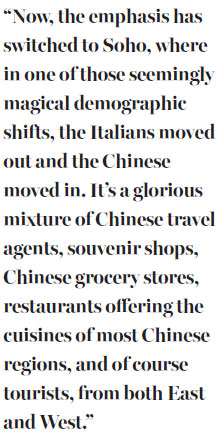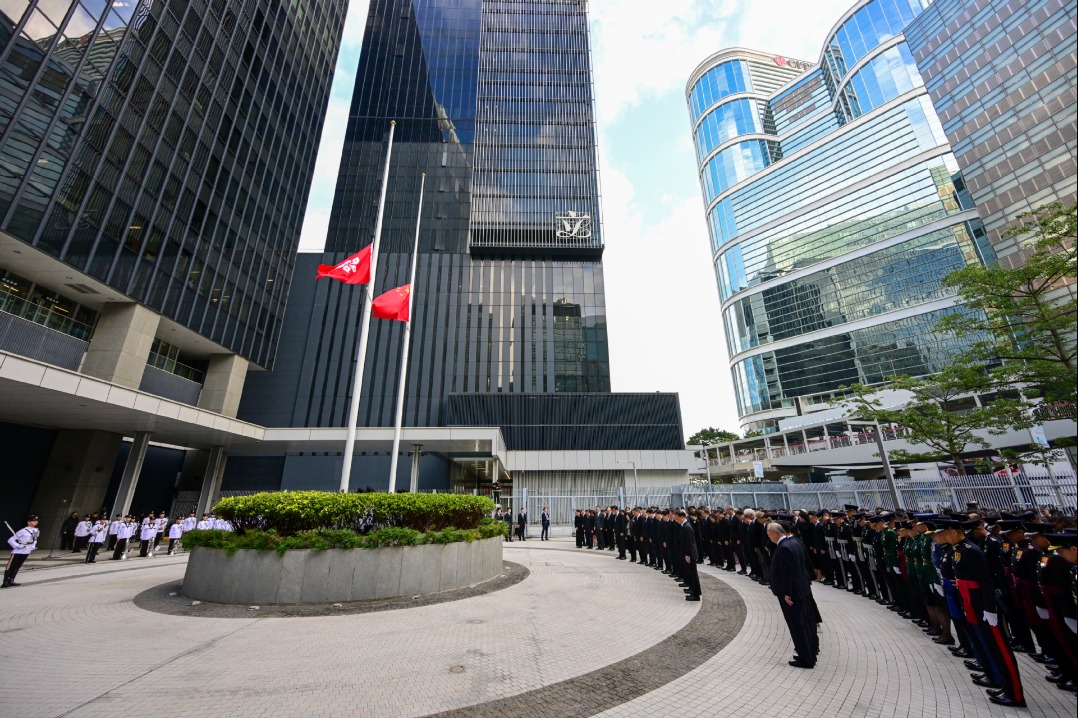London's Chinatown wasn't always in Soho

As demographic winds shift, Italians who replaced Maltese in Soho have now given way to new immigrants
One of London's big attractions, for both residents and visitors, has for decades been Chinatown in London's Soho district, with its bilingual street signs, its cheerfully chaotic Chinese food stores spilling onto the pavement, and the variety of Chinese cuisine on offer.
But it wasn't always that way.
When I first started coming to London, Soho was a mixture of dubious sex shops, so-called nightclubs you wouldn't want your worst enemy to go to, and rickety stairwells with signs offering the services of exotically named "models". The restaurants were virtually all Italian, some good, and some bad.

They had largely replaced Maltese immigrants, many of whom came here in the wake of World War II. Malta was a British possession then, and access was easy. Maltese gangs were famous for their brutality.
No, if you wanted good Chinese food, you had to head off to the rather sinister area called Limehouse, in London's East End.
In those days, the East End was still dominated by London's docks. When I started coming to London in the 1960s, the River Thames just below Tower Bridge, known as the Pool of London, was packed with freighters waiting to unload cargo at the warehouses that lined both sides of the river.
When Winston Church died in 1965, the cranes along the part of the river dipped in a coordinated salute as the barge carrying his coffin passed slowly by.
But let's head back to London's first Chinatown, in the dubious Limehouse.

As far as I can tell, Chinese immigrants, mainly men, began to populate the area then - home as it was to dosshouses and pubs you'd rather not tell your mother about - in the middle of the 19th century. Many had served as sailors, cooks and laundry hands aboard the ships that plied the trade routes between the fabulous Cathay, as Victorian writers referred to China, and the United Kingdom.
Many ended up not just in Limehouse, but also in the northern port city of Liverpool.
Looking at early photographs from the era, Chinese business alternated between restaurants and laundry - remember that this was in the days of washing by hand, long before machines were invented.
Back in Victorian times, Limehouse Chinatown was synonymous with opium dens and gambling, the opium being the cursed legacy of the UK's first trade with China.
Gambling has always been a Chinese obsession - a Chinese friend of mine said Chinese would gamble on raindrops running down a window, to see which reach the sill first.
Limehouse was famous for two gambling games - fan tan and later puka-pu, a sort of lottery. News reports from the 1920s spoke of gangs fighting in the streets over control of the games.
Although a lot of lurid newspaper stories, largely unencumbered by facts, spoke of dens of vice and white slavery, in fact as the century wore on, Limehouse gained a sort of respectability.
In the late 1960s, the first Chinese restaurant I went to in London was an excellent if austere establishment called Good Friends, in Salmon Lane. It was so successful, counting stars like James Bond actor Sean Connery, singer Barbra Streisand and veteran comedian Groucho Marx, that owner Charlie Cheung opened more, including Old Friends and New Friends, also in Salmon Lane, and Local Friends, recognized as the UK's first Chinese takeaway. It's still there to this day.
Now, the emphasis has switched to Soho, where in one of those seemingly magical demographic shifts, the Italians moved out and the Chinese moved in. It's a glorious mixture of Chinese travel agents, souvenir shops, Chinese grocery stores, restaurants offering the cuisines of most Chinese regions, and of course tourists, from both East and West.
Long may it continue.
The author is managing editor of China Daily European Bureau. Contact the writer at chris@mail.chinadailyuk.com
(China Daily European Weekly 09/09/2016 page13)
Today's Top News
- Xi stresses improving long-term mechanisms for cyberspace governance
- Experts share ideas on advancing human rights
- Japan PM's remarks on Taiwan send severely wrong signal
- Key steps to boost RMB's intl standing highlighted
- Sustained fight against corruption urged
- Xi calls for promotion of spirit of volunteerism






























